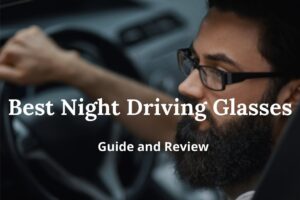Driving at night is considered more dangerous because of the constant change in lighting. A bright flash from the headlights of a passing car, streetlight or storefront can blind the driver for 2 seconds while their vision adapts to the new mode. In order to reduce the strain on the retina, night driving glasses with yellow tinted lenses, anti-reflective coating and polarization have been developed. Yellow increases the contrast of the image. The anti-reflective coating reduces lens glare, and the polarizing effect protects the eye from the bright light of oncoming headlights, flashlights and other light sources.
All drivers need night driving glasses?
Night vision glasses are not a must-have accessory for all motorists. If night driving is not uncomfortable for the driver, he or she can do without the additional protection. However, for those who suffer from hypersensitivity, astigmatism or cataracts, night vision goggles can make driving much easier. Drivers in their 40s should also consider such a purchase. It is at this age that age-related changes in the eye begin to occur and gradually lead to deterioration of vision.
What to look for when buying night driving glasses
When choosing the best night driving glasses, you should pay attention to these characteristics:
- The color of the sputtering. The advantage here is yellow and amber shades. These shades level the brightness of blue and blue colors, thereby improving the contrast of the image at night. Orange and honey lens colors have the same properties, but they transmit much less light, which negatively affects visibility in the dark.
- Lens material. Fans of classic glass glasses for night driving should remember that this material is prone to mechanical damage and is easily broken, which can lead to injury to the driver. In addition, glass is much heavier than other materials, which means that prolonged wearing of such driving glasses can be uncomfortable. Plastic lenses are less dangerous, but also, in case of impact, can break. Therefore, it is believed that the best night driving glasses are made of optical polymer. Such lenses have increased impact and wear resistance.
- The presence of polarization and anti-reflective coating, as well as UV protection, in case the driver plans to wear glasses for night driving in the daytime.
How to avoid glare when driving at night
To make nighttime driving a pleasure:
- Purchase night driving glasses with anti-reflective and polarizing coating and comfortable, comfortable frames.
- Consult an ophthalmologist.This advice primarily applies to those over 40 years of age. At this age, vision changes begin, which may not always be obvious in everyday life, but while driving at night play a cruel joke with the driver.
- Turn off the lights in the interior of the car. In this way the vision will adapt to the darkness, increasing the sharpness and clarity of vision.
- Properly adjust the mirrors at night so that they do not catch the glare from the headlights of passing cars.
- Avoid eye contact with the light source even while wearing driving glasses.
- Cleanliness of the windshield, both inside and outside, chips, cracks and scuffs can also affect ride comfort. There are special anti-reflective films that are applied to the windshield, as well as overlays on sun visors with the same effect.
